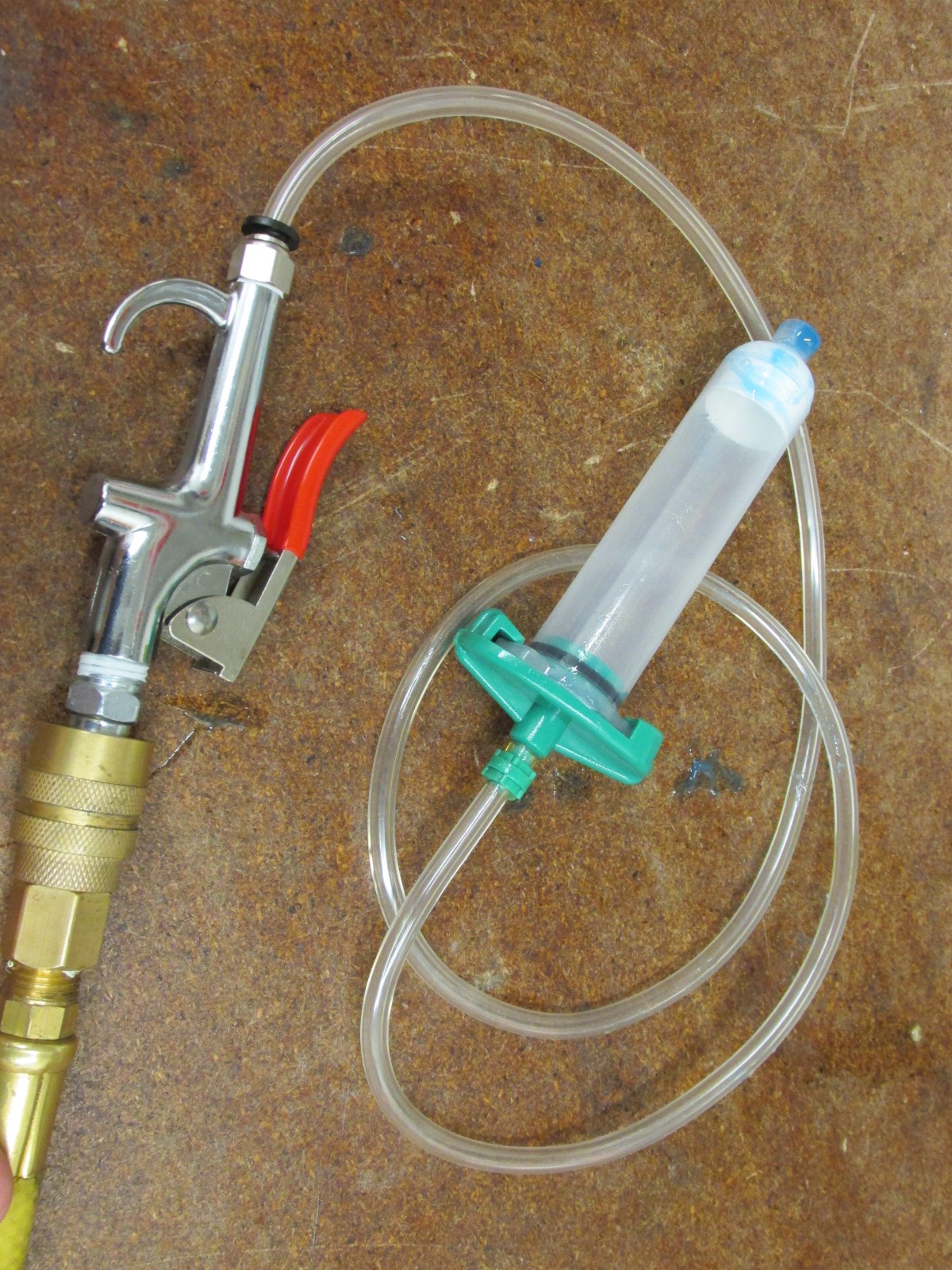My new aluminum mold offers several advantages over my previous silicone mold. Firstly, the mold is much more accurately machined. The silicone mold was cast off of 3d printed parts from my Makerbot Replicator 2x. So my mold was only as accurate as the 3d printed parts. The new mold is cnc milled into a block of aluminum, so the accuracy is that of the cnc mill.
The second major advantage to my aluminum mold is that the mold is rigid. With the silicone mold I could not force the resin in under any real pressure because the mold would deform and start to separate, then the resin would get between the mold halves and I got bad parts. Since the aluminum mold is rigid and clamped together I can inject the resin under high pressure.
I was using a syringe to inject the resin by hand and that worked, but my hand quickly got tired and it was rather slow. They sell air powered syringes for dispensing just about any type liquid you want. They are commonly used for industrial dispensing of super glue, solder flux, epoxy, silicone, and even grease. The only problem is they are a little pricy. $750 or so for the control unit.
So I did what every good hacker would do. I decided to make my own. I ordered some parts from amazon and requested a sample kit from one of the companies that sells the controller. They sent 15 syringes, plungers, and caps. As well as one syringe adapter. I connected this adapter to my air holes with a simple air compressor nozzle. Here is a picture of the basic setup.
I set my air compress on 20 psi to start with and gave it a shot. WOW can it push the resin out fast. It wasn't spraying out or anything, but it flowed quite quickly. So quickly in fact that I made a mess. Haha. This is not meant to be the finished design. I just wanted to test if I could flow the resin and what kinds of pressure it would take. I am still waiting on some parts to build the finished design. One big problem with this design is the syringe becomes pressurized and the resin starts to flow. But you have no way of stopping it. That is what lead to the mess. The next version will have a solenoid and will be able to release the back pressure so you can stop it from oozing out everywhere.
I was also curious how easy it would be to remove the leftover resin from syringe and plunger. Ideally I would like to reuse these parts to keep the cost down in small volumes. In large volumes the cost of the syringe won't matter. But if I consume a syringe every 5 parts, the costs really add up. So after the resin was fully cured I tried to clean up the parts. The resin peels off the plastic syringes very easily. Not really a big surprise considering they are made from LDPE and very few things stick to PE. At one point in my life I was very upset that I could not glue the parts I made from PE together. Now I have started to use this to my advantage.
The only hard part was getting the plunger back out. It does not have a handle or anything to grip and it is all the way at the bottom of the syringe. But using my air compressor I could use air pressure to push the plunger back out. So all in all I am very happy with this experement. Now it is time to build a better controller that avoids the leaking problem.
 jupdyke
jupdyke

Discussions
Become a Hackaday.io Member
Create an account to leave a comment. Already have an account? Log In.